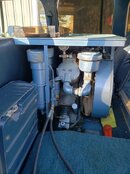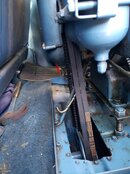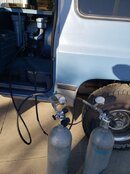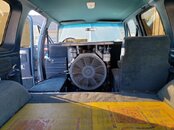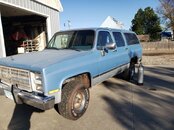RickyVR
Registered
My father built and sold compressors. He loved diving in the upper midwest and wanted portable air that would pump at 15cfm. He started with an Ingersoll Rand 4R15F compressor which powered with a gas engine mounted on a trailer. He liked it, however, he had to leave the boat behind when diving. His solution was to mount the compressor in a brand new 1985 Chevrolet Suburban. He ran the compressor off the vehicle engine via PTO. What do you think?
This unique combination has been used at many large diving events through out the last many years. Some weekends we would pump up to 120+ tanks of air.
This unique combination has been used at many large diving events through out the last many years. Some weekends we would pump up to 120+ tanks of air.




